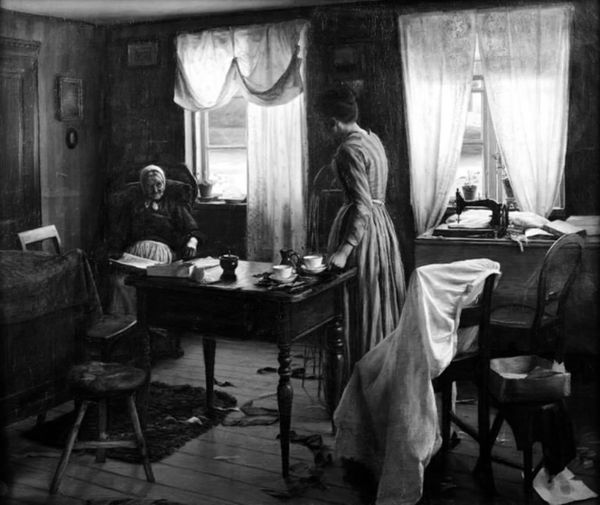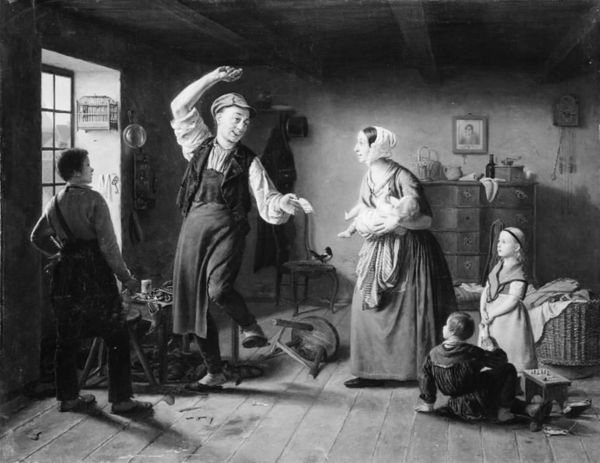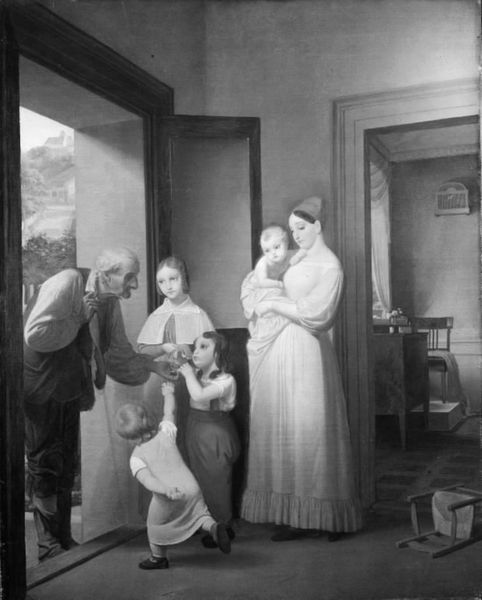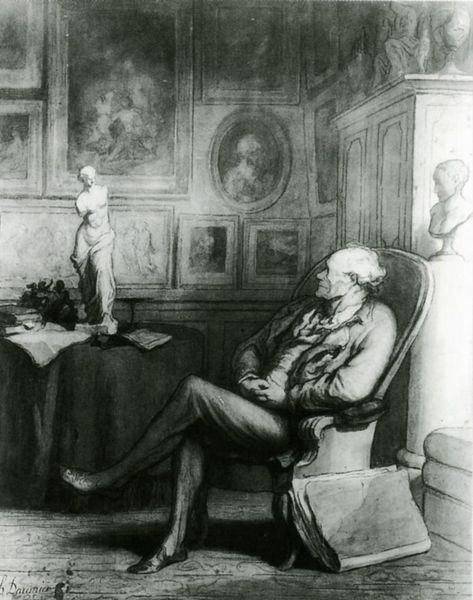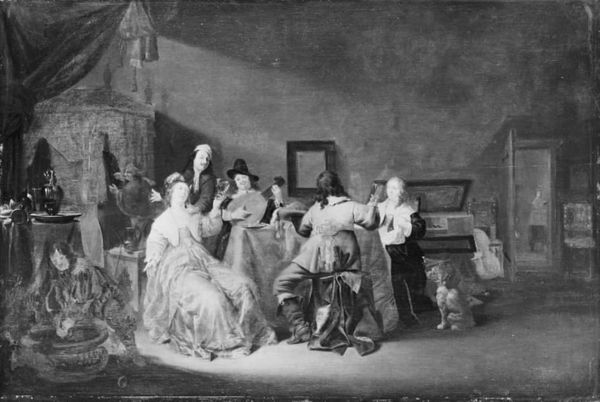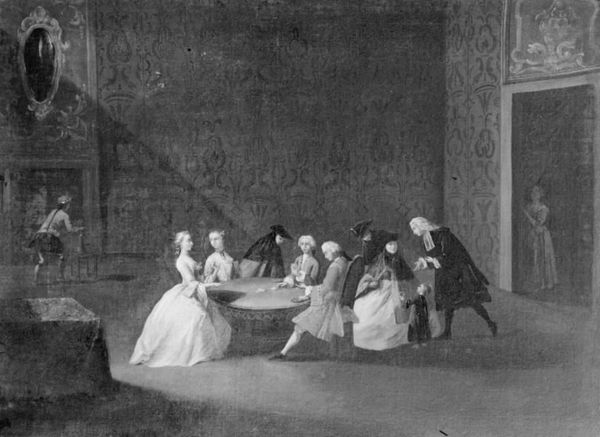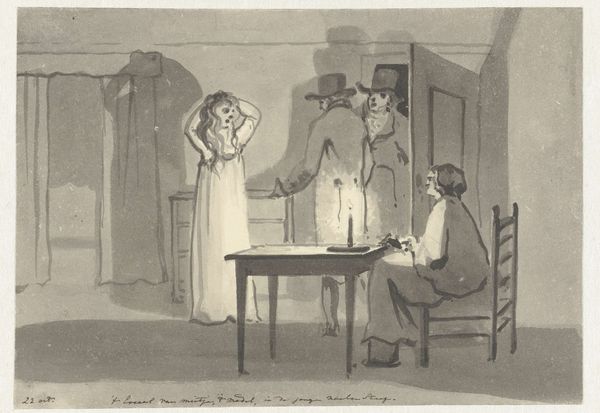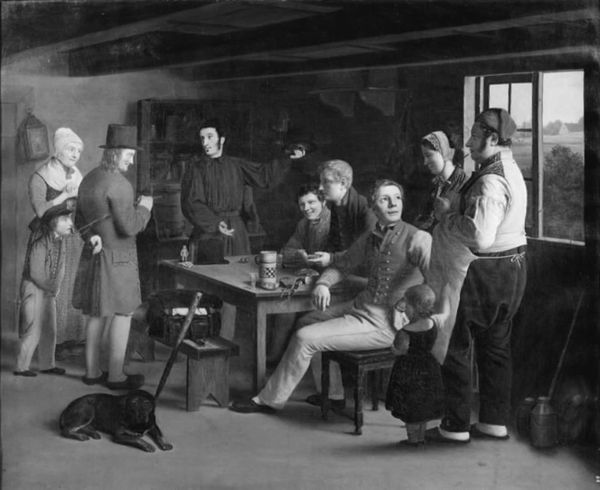
painting
#
portrait
#
black and white photography
#
painting
#
romanticism
#
black and white
#
monochrome photography
#
genre-painting
#
monochrome
#
monochrome
Dimensions: 54.5 cm (height) x 59.5 cm (width) (Netto)
Editor: Here we have Julius Friedländer’s, “A Doctor at a Sickbed” from 1840. It's oil on canvas, and the stark monochrome really enhances the somber mood. What strikes you about the materials and the social context they evoke? Curator: The limited palette isn't simply aesthetic; consider its implications for accessing pigments in 1840. Monochrome could represent economic constraints, impacting production costs and possibly broadening accessibility of artwork due to its simplicity in means of production, although clearly it isn’t “cheap” here. Also, consider the textural details--how does the artist’s use of paint and layering inform the viewer about the patient's social position, compared with that of the doctor? Editor: So you are suggesting that the choice to represent this scene in monochrome could imply that not every class could necessarily afford colorful representations of similar scenes in their lives at this time? I guess I hadn’t really thought about it like that... Curator: Precisely. How does that change our perception of the scene itself? It shows figures linked by sickness and medicine but firmly separated by what they own. Editor: I can see that, especially thinking about that incredibly draped bed in the painting’s foreground...it really is opulent and it has this strange imposing air in a room that’s rather devoid of ornament otherwise. Curator: Indeed, the scene depicts more than medicine; it showcases a division of labor reflected in consumption. Can we examine those stark contrasts? What does that spinning wheel communicate to a contemporary audience regarding labor versus idleness or convalescence, class, or gender? Editor: I’m noticing how objects take on symbolic meanings. It makes you wonder about what's truly valued here--is it health, status, or just the material possessions that define them? Thanks! I’ve never looked at this from such a production-oriented angle before! Curator: Likewise. Examining artwork through a materialist lens certainly challenges assumptions. We see the process of its making as intimately related to the socioeconomic circumstances of its subjects and artist, giving insights into social conditions in Denmark during Friedlander's lifetime.
Comments
No comments
Be the first to comment and join the conversation on the ultimate creative platform.

